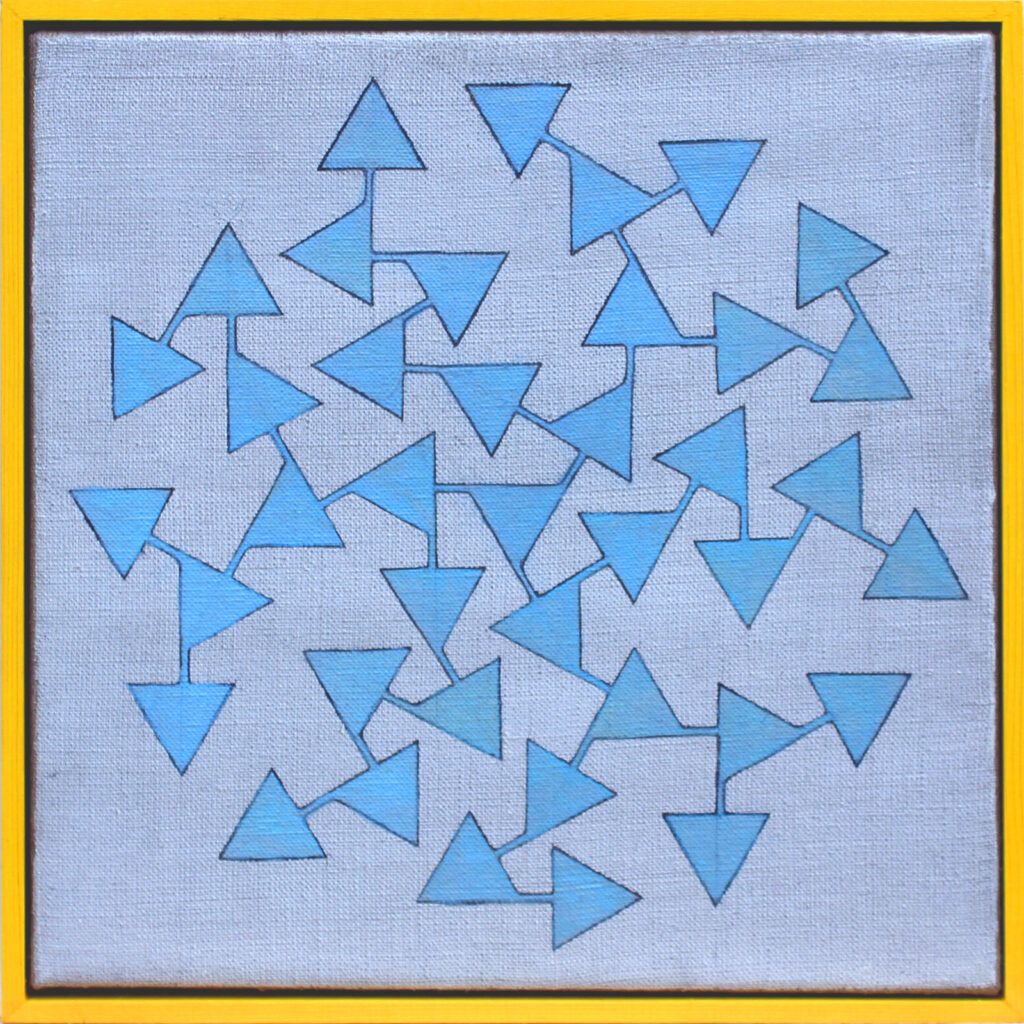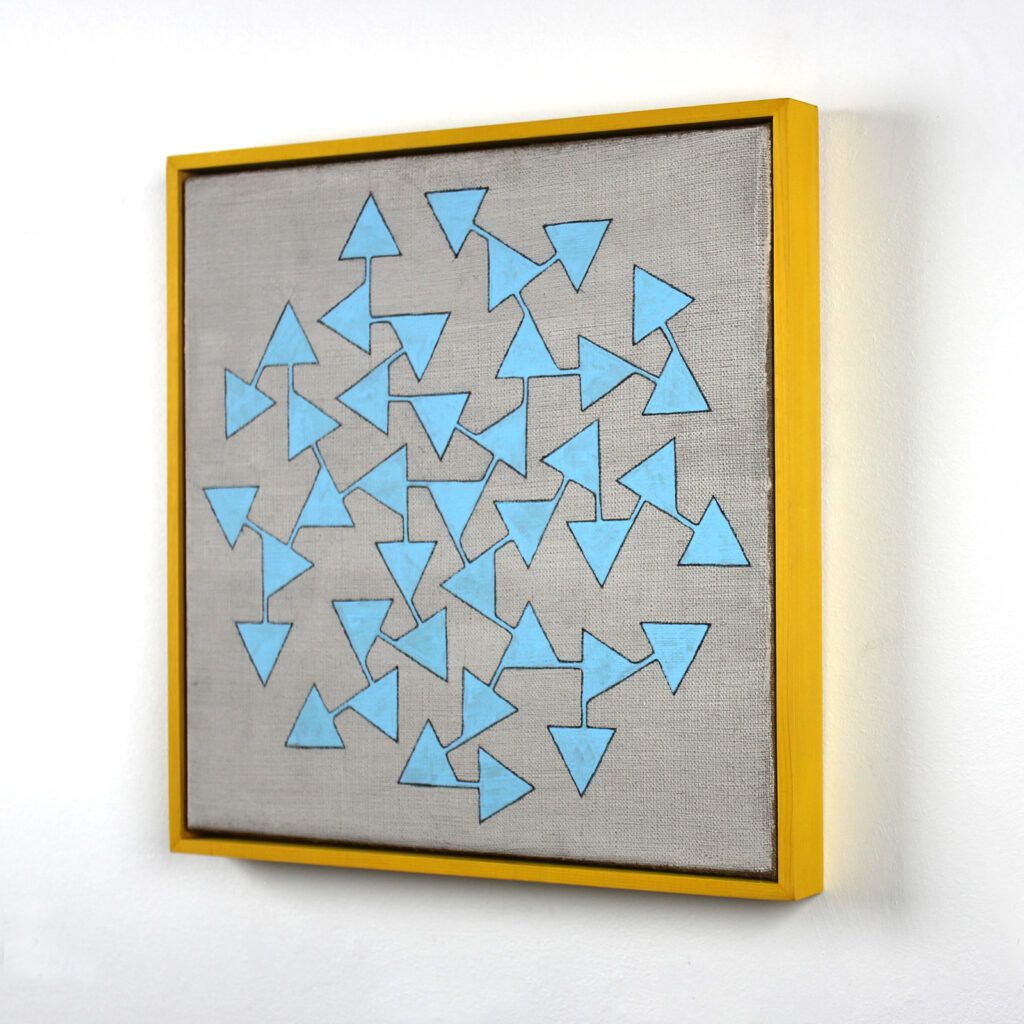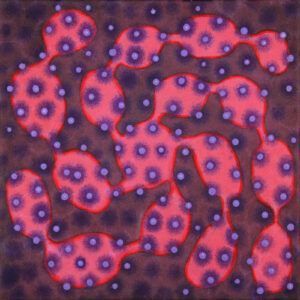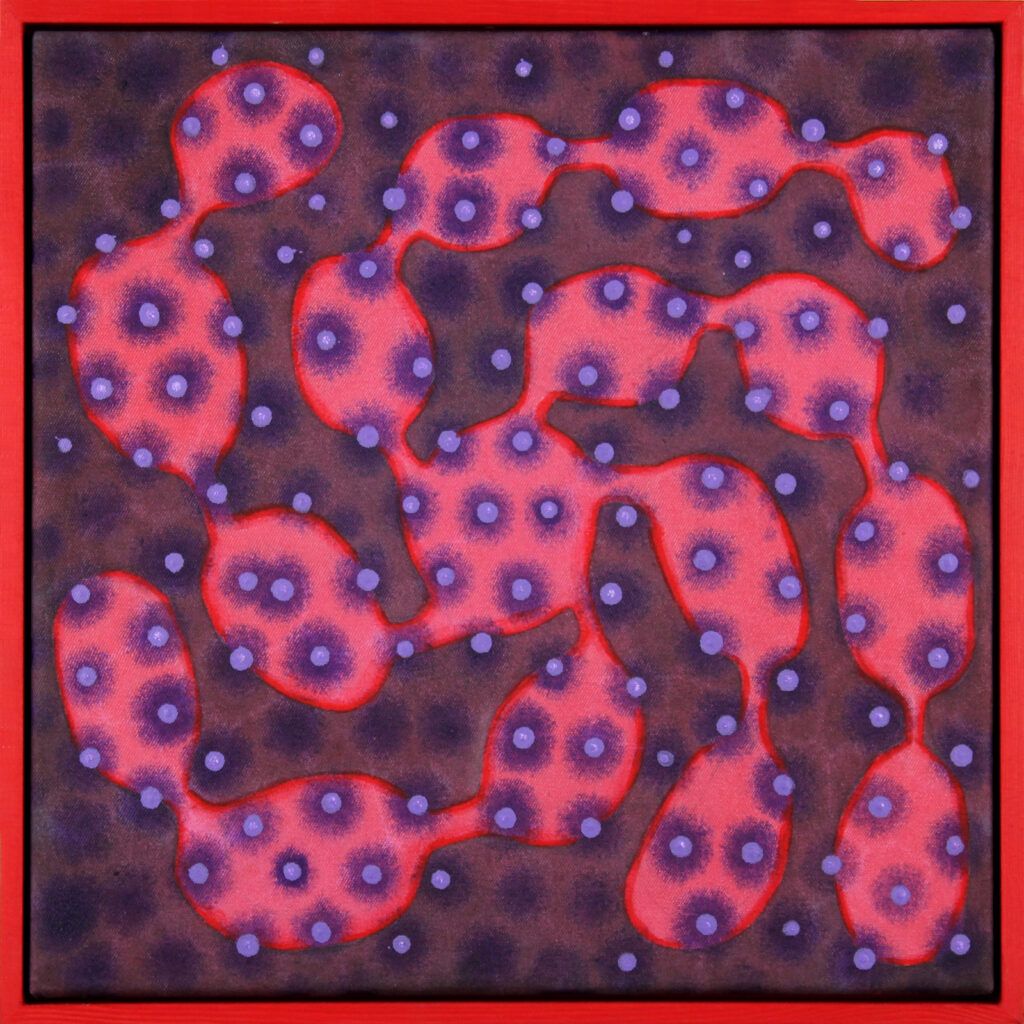
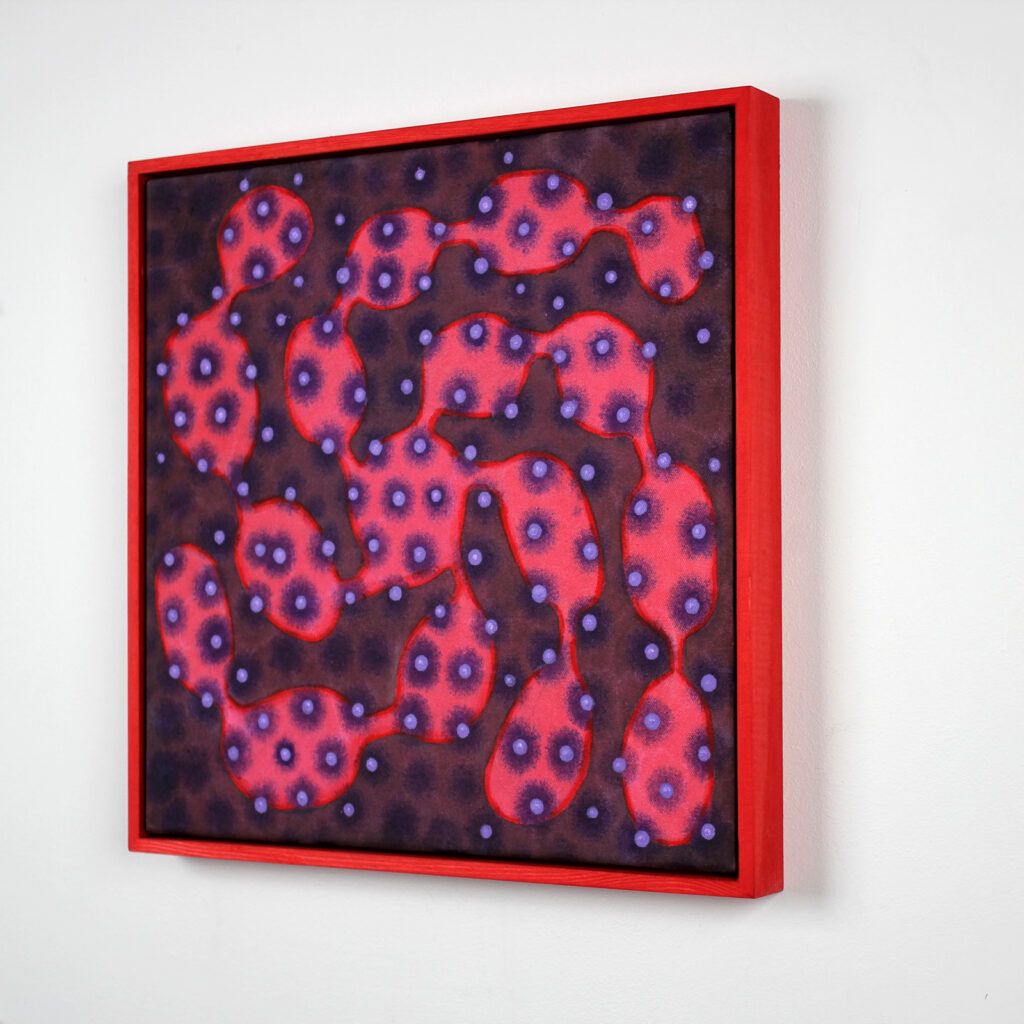
If you’re considering getting a painting for your wall, you’re probably also considering if, or how to frame it. If not, you should. Because putting a frame on a painting will affect the overall esthetics of the painting and how you perceive it. To frame a painting is an important decision that you should consider carefully.
A well chosen frame can enhance the esthetics, make the colors stand out and present the painting at its best. An ill-chosen frame can, in the worst case scenario, ruin the painting.
Frame or no frame
First, you need to decide whether you want a frame or not. You don’t necessarily need to frame a painting – sometimes it’s really better not to. If you like the look of an unframed painting and it fits the style of your room, it’s perfectly fine not to frame. I often think my paintings go well without frames.
Another instance where it might work well without frames is, if you get 2 or 3 of my smaller paintings and hang them next to each other. Without frames the paintings can interact without any disturbance from a frame. But again, frames could certainly also give them that extra touch. It will always be an individual assessment.
If you have decided not to frame, that’s it, you don’t need to read any further. However, if you would like a frame for your painting, some more consideration is needed.
To frame
If you decide to frame, you may have a strong opinion about what kind of frame you like and what suits your home – that’s perfectly alright. You are free to frame however you like. But before you go ahead and decide for a frame, I would like to give you my take on what I think compliments my works the best.
Type of frame
I often think a float frame is the best choice. I prefer floating frames because I like to see the edges of a painting. Actually I’m very specific about how I finish a painting towards the edges. Sometimes the edges might seem a little rough or unfinished – but that’s on purpose. Don’t think I was careless. The rough edges are exactly how I intended them to be – they’re part of the work. Please don’t try to cover the edges with a frame to conceal this feature.
Thickness
I prefer rather thin frames in order for the frame not to take attention away from the painting. Thicker frames can sometimes be too overwhelming and interfering.
Color
Sometimes a rather neutral colored frame is best. For instance, to not add too much extra to the painting, but to let the painting speak for itself. Another reason to choose a neutral color is to make the frame fit in with the overall decorative style of your room.
At other times a colorful frame can compliment the painting very well, even complete it.
If the painting has several and contrasting colors the best choice is often to choose a color similar to one of the colors in the painting. This is to avoid bringing even more colors into the mix, which will risk giving a confused impression.
If the painting is monochrome or only has colors close to each other in the color wheel, a contrast color might work great. A contrast color will bring out the colors of the painting and make them seem more intense.
If you go for a contrast color, you can either choose a bright or a muted color. Choosing a bright color like above is a strong statement and can be very interesting – but doesn’t always work well.
A muted color is less intense. It’s still a color, but closer to black, grey or white than a pure color. Sometimes it’s almost black, grey or white with only a hint of color. Choosing a muted color will also bring out the contrast color, but without competing with it. If you have two bright contrasting colors next to each other, they will compete for the attention. If you have one bright color and a muted contrast color next to it, the bright color will seem even brighter and get most of the attention. Choosing a muted color is a more subtle way of making use of the contrast effect.
I hope the above orientation was enough to help you choose if or how to frame your painting.
As you can see from the examples above I have already framed a number of my paintings. Click the link to see which framed paintings is available for purchase.
Do you need help?
If you have decided that you want a frame on your painting or paintings, but you’re not sure what to choose, don’t panic. I would love to help you.
This is how I suggest you do. Go to the webshop and pay for the painting you want, so no one else grabs it under your nose. Then contact me by email. Write in the subject line: “Help with framing” and describe how you would like me to help you.
If you want to frame the painting after you’ve received it, I can give you free advice on what type of frame and what color I think fits your particular painting.
If you want to receive the painting mounted with a frame I can either put a simple float frame on the painting and paint it in a color I think compliments the painting, or I can take the painting to a frame shop and choose a frame I think will fit. In both these cases there will be an additional cost depending on what solution you choose.
